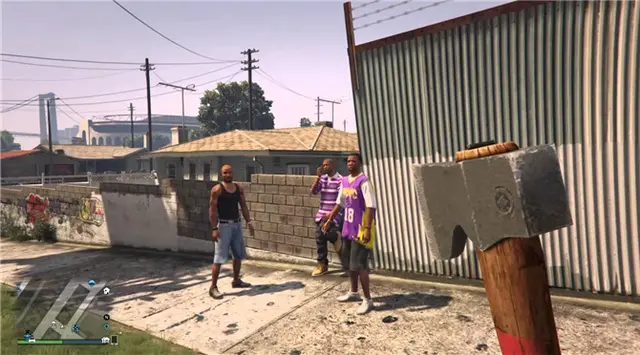Australian archaeologists believe they have found the oldest man-made ground-edge axe in history, providing proof that humankind developed this kind of tool up to 10,000 years before first thought.
The fragment was discovered in Western Australia's Kimberley region, and has been dated to be between 45,000 to 49,000 years old.
The tiny axe piece, measuring no bigger than a thumbnail, is 10, 000 years older than the previous oldest known fragments found in northern Australia in 2010.
Without any pre-dated evidence to the contrary, the Stone Age find effectively means indigenous Australians were the first race to invent and use the tool.
Professor Sue O'Connor, who discovered the fragment, said the piece of rock backed up Australia's claim that hafted axes were first developed Down Under.
"In Japan such axes (also) appear about 35,000 years ago. But in most countries in the world they arrive with agriculture (about) 10,000 years ago," Professor O'Connor, from the Australian National University School of Culture, History and Language, told the Australian Broadcasting Corporation (ABC) on Wednesday.
It means Aboriginal people, who historians believe arrived in Australia between 50,000 to 55,000 years ago, had more sophisticated early tool-making skills than previously thought.
"Australian stone artefacts have often been characterised as being simple," O'Connor said. "But clearly that's not the case when you have these hafted axes earlier in Australia than anywhere else in the world."
O'Connor found the fragments in the 1990s, but only re-examined the find in 2014.
She enlisted the help of Professor Peter Hiscock of the University of Sydney to verify the find.
The team radiocarbon dated the layer of charcoal sediment, where the axe fragment was found, to 43,941-48,875 years.
Hiscock also said the artefact couldn't have been smoothed naturally, meaning a human must have shaped and polished it on a softer rock.
To prove his point, Hiscock took basalt from the same area as where the stone was discovered and rubbed it on nearby sandstone.
"It took 800 double strokes to get the same smoothness [as the axe fragment]," he told the ABC.
"It's not the kind of thing that happens accidentally."
The research has been published in the journal of Australian Archaeology.
(APD)
 简体中文
简体中文







